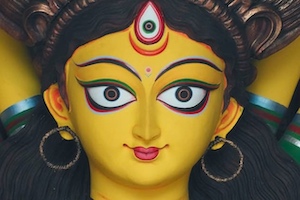Stage-film crossover: Artistes reveal secret of balancing act
Times of India | 28 March 2025Uttam Kumar, Tulsi Chakraborty, Rabi Ghosh, Gyanesh Mukhopadhyay, Bhanu Bandyopadhyay, Jahar Roy, Soumitra Chatterjee, Manju De, Madhabi Mukherjee and Sabitri Chatterjee belong to the list of stalwarts who have simultaneously excelled in both media. Explaining how a stage actor can prepare for cinema, director Atanu Ghosh quoted film-maker and theatre director Elia Kazan, who had said, "Whereas you can get away with faking, posturing, and indicating emotions on stage, it's difficult, if not impossible, to get away with anything false before the camera. That instrument penetrates the husk of the actor; it reveals what's truly happening — if anything, if nothing."
Basu said the fundamental challenge stems from the insufficient comprehension that theatrical and cinematic acting necessitate distinct approaches due to their inherent medium differences. Excessive reliance on dialect and physical acting is a big problem, too, Basu added. "In cinema, I modify my performance based on the specific lens utilised for filming," Basu said.
Sawon Chakraborty, who started on stage before garnering acclaim for his role in Anjan Dutt's ‘Chaalchitra Ekhon', said directors lacking comprehensive understanding of the craft occasionally depend on actors to pull off scenes. "Consequently, actors resort to exaggerated eye movements or delivering dialogues boisterously to receive accolades. At times, actors receive vague instructions to ‘do something'. Another prevalent misconception revolves around ‘underacting'. In reality, there exists only good or bad acting. The notion of underacting is non-existent," he said.
In Sengupta's case, direction or making a film is "representation of reality, people, interactions, reactions, images, and emotions from memory". On being asked how to avoid the loud, melodramatic performances that are often passed on as ‘good acting' by theatre actors on screen, he said: "That's possible by holding on to the memories of life and experiences and going to any length to recreate what we treasure. Memories can be loud, based on what a person has experienced and with whom. Loud here refers to dramatic and melodramatic, which are basically ornamentations of storytelling. But it has been toned down according to my experience and memory from where I recreated it."
Sarkar said: "Cinema is a more difficult medium than stage. The plot gets lost because of lack of education. A stage actor needs to have a free mind to be educated properly about cinema before facing the camera," Sarkar said. Stay updated with the latest city news, Air Quality Index (AQI), and weather updates for major cities like Delhi, Mumbai, Noida, and Bangalore on Times of India.
